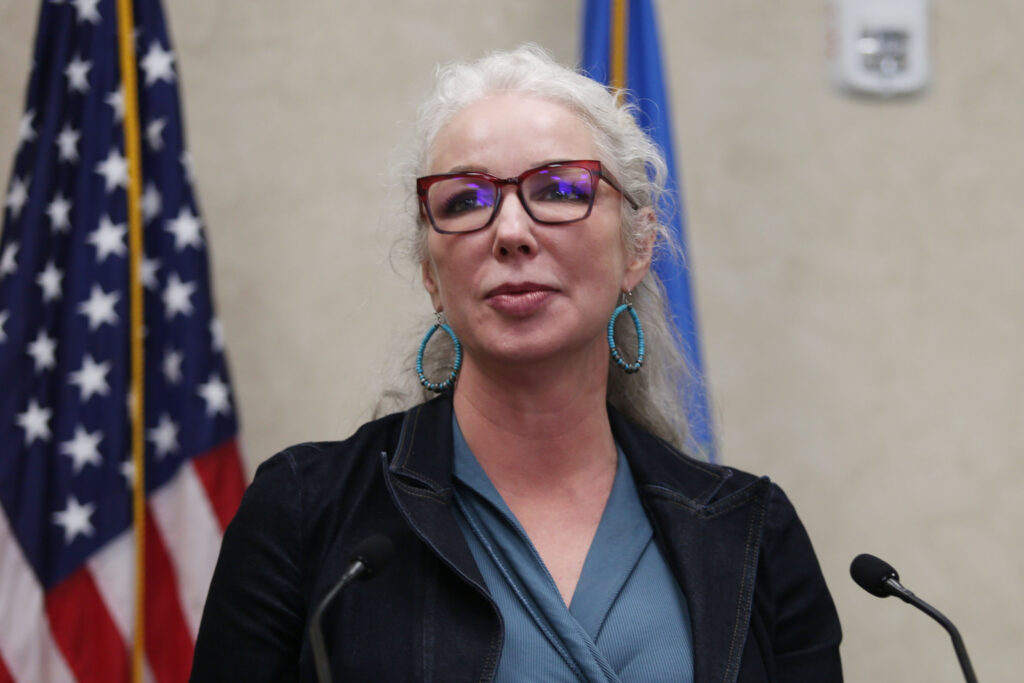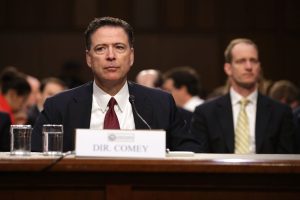
South Dakota Department of Health Secretary Melissa Magstadt speaks at a press conference in Sioux Falls on April 25, 2025. (Makenzie Huber/South Dakota Searchlight)
It’s not as bad as it could’ve been: That’s the new bar for public health success in South Dakota.
The leader of the state Health Department, Melissa Magstadt, made that clear Thursday when she declared herself “so proud” of the state’s measles response.
In an opinion piece she wrote and sent to the media, Magstadt summarized the state’s efforts since measles cases surged earlier this year in other parts of the country and reached South Dakota in May.
Her staff identified at-risk counties, provided updated advice for health care providers, increased the state health lab’s testing capacity, notified over 400 potentially exposed people, helped concerned patients review their vaccination records, and conducted pop-up immunization clinics.
Results of SD’s special measles clinics: 14 vaccinations, including zero in seven of 11 locations
There were some missteps, too, which we at South Dakota Searchlight pointed out in a recent news story that might have motivated Magstadt’s piece.
In June, when the department announced a schedule of measles vaccination clinics in 11 cities, the announcement didn’t say whether the clinics would be free — an important bit of information to share when trying to avert the rapid spread of a disease. The department eventually told us it provides immunizations “at no cost when insurance isn’t an option.”
It took us weeks to learn the results of the clinics, after the department initially claimed that disclosing numbers would violate patient confidentiality. When we finally pried the data free, the likely reason for the secrecy was apparent. At seven of the 11 announced locations, nobody got vaccinated for measles on the days of the special clinics, while a total of 14 measles immunizations were administered at the other four locations.
Although those clinics were largely a bust, the department said its other efforts have helped to push the number of measles vaccinations in the state past 6,000 this year, which is about 1,200 more than the same time last year.
The department deserves credit for that, and for helping to stop the spread of measles at 12 known cases so far. Magstadt said the absence of any new cases during the past four weeks is evidence that the state “has done remarkably well.”
That’s as it should be. When an infectious disease threatens South Dakotans, we should expect no less of our Department of Health than to do its job. We should’ve expected more of the department before the crisis arrived, and we should expect more of it going forward.
Magstadt didn’t mention in her opinion piece that the state’s kindergarten measles vaccination rate tumbled from 97% to 90% during the past 10 years, while she and other public health officials failed to effectively counter the false and conspiratorial narratives about vaccine safety and efficacy that drove the decline. Nor did she mention the role of falling vaccination rates in the return of measles after the disease was eliminated in the United States 25 years ago.
Magstadt seems uninterested in asking what went wrong, choosing instead to proclaim victory amid a still-unfolding situation and insisting that South Dakota did “so well” at limiting the spread of measles “because we were ready.”
If scrambling to contain the predictable results of a decade-long drop in the vaccination rate is what passes for preparedness in South Dakota, maybe we need to set the bar for disease prevention a little higher.
Don’t miss new commentary: Sign up for our free newsletter.





